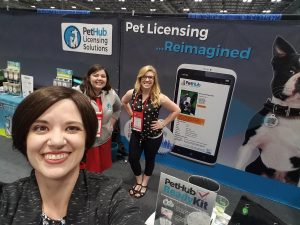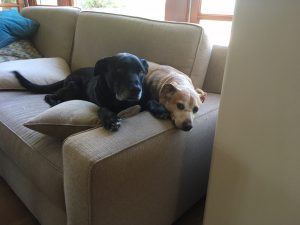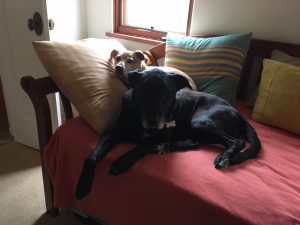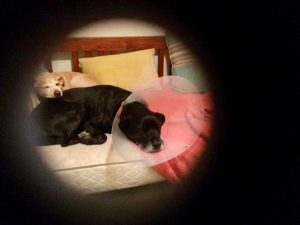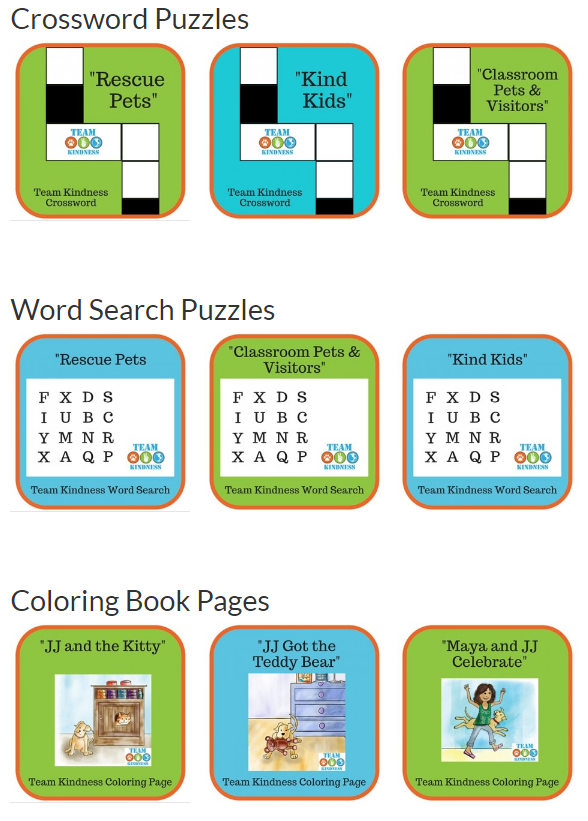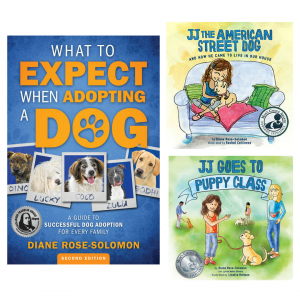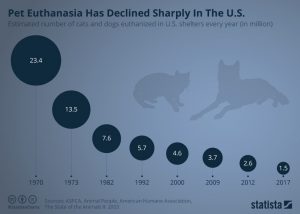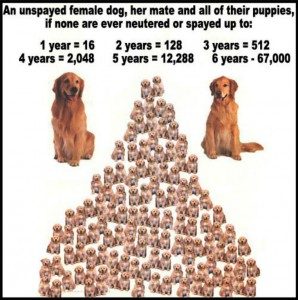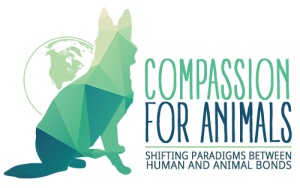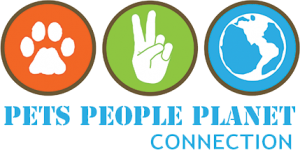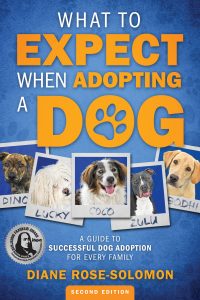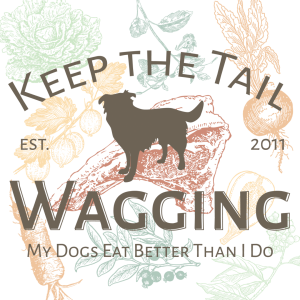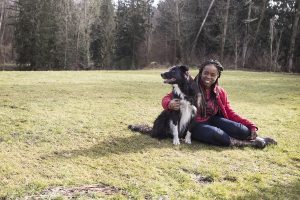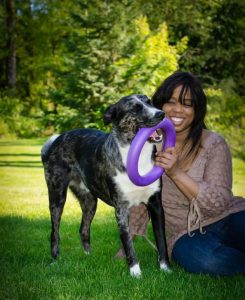I finally caught up with Rachel Sheppard, the author of the blog My Kid Has Paws. She has some pet care skills that give her good street cred. Check out this sweet interview and please visit her 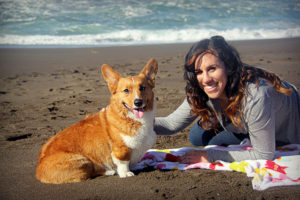 blog!
blog!
DRS: How did you get started blogging?
RMS: I spent 3 years working at veterinary hospitals as a technician and once I left, I felt something was missing. I had a unique opportunity through my grad school program to meet Kristen Levine. She is a pet-lifestyle expert and I thought that was amazing! Her advice to me was to start a blog and share all the knowledge I had gained throughout my undergraduate degree in Animal Science and my experience in veterinary hospitals.
DRS: That’s awesome. How does your blog help both animals and people?
RMS: I focus on helping people learn more about pet health and rescue. Occasionally, I post about products, travel, etc., but my true focus is on teaching pet parents how to keep their pets healthy.
DRS: What is your connection with animal rescue?
RMS: I have friends who work at several rescues, including Muttville in San Francisco, CA. Occasionally, I have an opportunity to make a donation to a rescue as part of a campaign, which is amazing! As a result, I have also worked with Queen’s Best Stumpy Dog Rescue in LA.
DRS: Fabulous. Do you have a favorite pet or animal story?
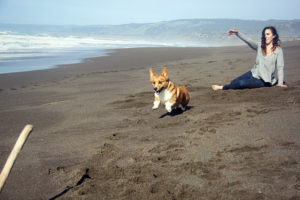 RMS: I actually have two stories. The first is how my husband and I adopted Rooney.
RMS: I actually have two stories. The first is how my husband and I adopted Rooney.
We had already spent 5 months looking to adopt our dog. It was one of those things where we met with several dogs, but we hadn’t really met the perfect dog for us yet. Then, I reached out to Golden Gate Pembroke Welsh Corgi Rescue about a Corgi I saw on their website. I received an email a few days later saying that the dog we reached out about was probably not the best fit for us, but they had another dog in mind who had just arrived at the rescue. A few days later, we drove a few hours to meet Rooney, and then he burst through the dog to greet us, and we both thought, “he’s perfect!”
I also really love the second story about Bella the Basset. We were able to raise money for her surgery and find her a new home, and it’s still one of the best campaigns I ever participated in 🙂 You can read about how a special family adopted a truly special dog here: http://mykidhaspaws.org/?s=Bella+the+basset
DRS: Can you share a pro tip for pet parents?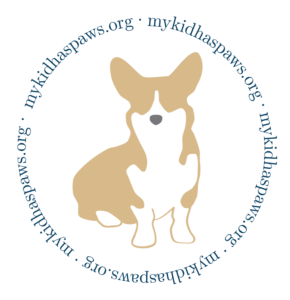
RMS: My number 1 health tip for pet parents is to keep their pets at a healthy weight. There is so much that can affect our pets that is out of our control, but we can make sure they maintain a healthy weight, and that can help prevent disease and make their senior years more joyful.
DRS: Cool! What’s next up for your blog?
RMS: More content and hopefully more consistency! I am so grateful for every single person who has taken the time to read anything I write. The fact that I get to do this as a hobby is incredible!
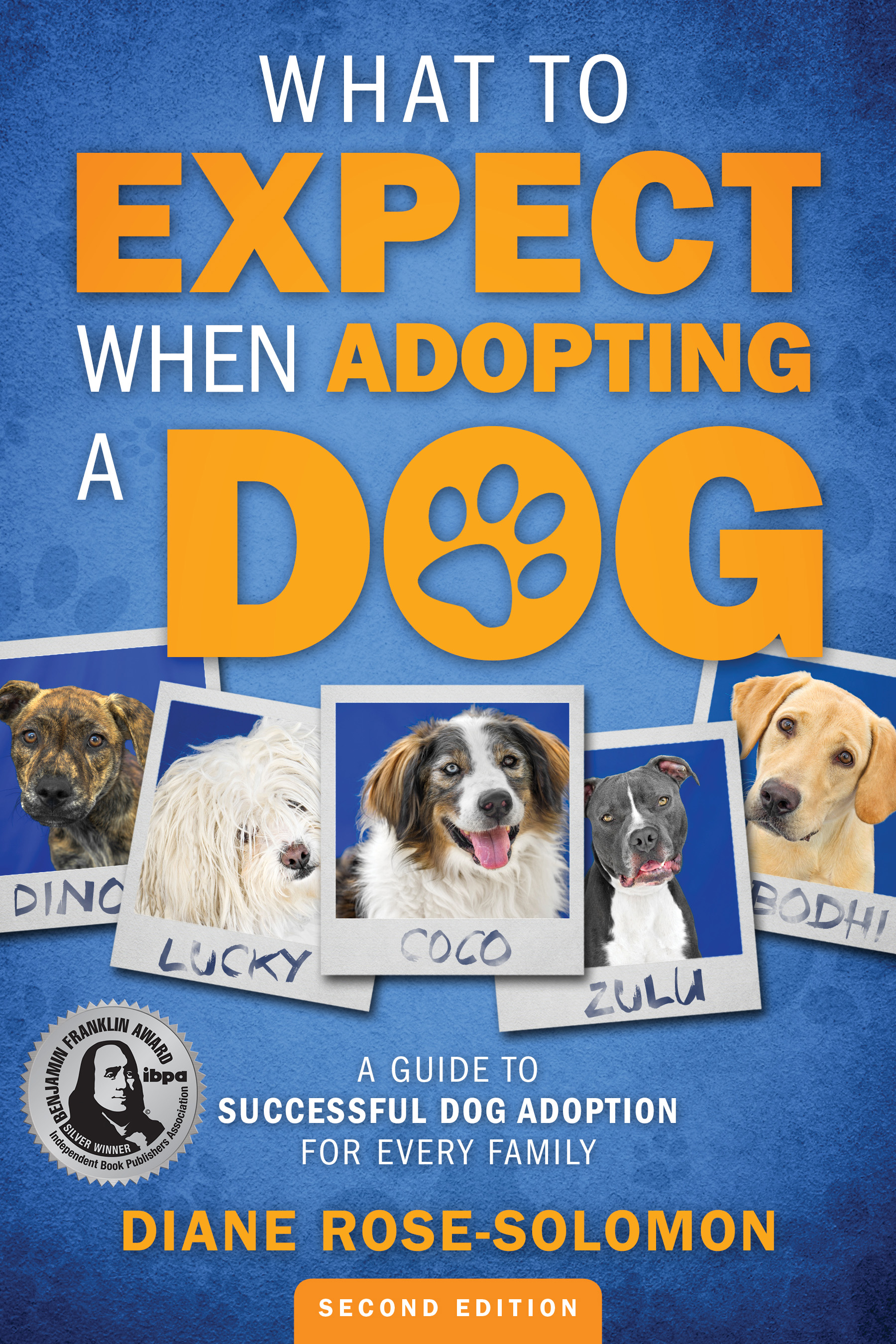 DRS: We’re looking forward to reading more. Where can we find your blog?
DRS: We’re looking forward to reading more. Where can we find your blog?
Thank you, Rachel, for your contribution on so many levels to animals and the people that care for them.
Are you looking for your perfect Rooney? Do you already have a dog and have questions? Pick up a copy of What to Expect When Adopting a Dog for some answers!
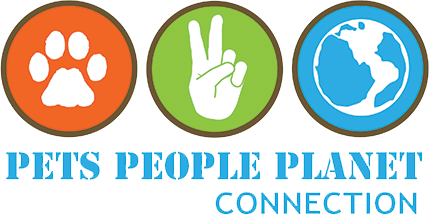
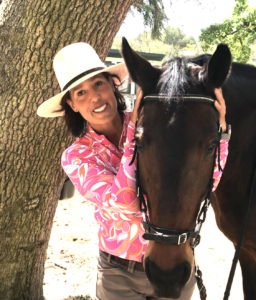 It’s not snake oil, it’s horse oil. And it’s horse oil that’s amazing for humans too! I know it’s not snake oil because I use it and love it. The product I love is called Soothing Salve and it’s made by a company called Equine and Human.
It’s not snake oil, it’s horse oil. And it’s horse oil that’s amazing for humans too! I know it’s not snake oil because I use it and love it. The product I love is called Soothing Salve and it’s made by a company called Equine and Human.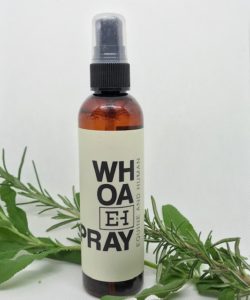 about ways I could help animals and be able to spend more time with horses. Equine massage therapist and energetic body worker was where I landed.
about ways I could help animals and be able to spend more time with horses. Equine massage therapist and energetic body worker was where I landed. KM: The basic idea is to make a product that not only helps you physically but also delivers a very uplifting and also grounding emotional or energetic feeling. Horses are prey animals and tend to flee or freeze when frightened and humans are predatory animals and tend to want to stay and fight. Energetically we need to come into harmony to achieve whatever goals you set up for yourself and your horse. And really the horse is just a metaphor for life- unpredictable. Anxiety, depression, trauma, insomnia, fear, rage are pretty common in people so hopefully the blend of essential oils and other high quality plant and mineral ingredients in my products help all living beings feel happier and perform better.
KM: The basic idea is to make a product that not only helps you physically but also delivers a very uplifting and also grounding emotional or energetic feeling. Horses are prey animals and tend to flee or freeze when frightened and humans are predatory animals and tend to want to stay and fight. Energetically we need to come into harmony to achieve whatever goals you set up for yourself and your horse. And really the horse is just a metaphor for life- unpredictable. Anxiety, depression, trauma, insomnia, fear, rage are pretty common in people so hopefully the blend of essential oils and other high quality plant and mineral ingredients in my products help all living beings feel happier and perform better.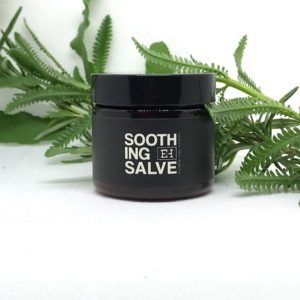 perfect amount of product. For people, in winter, I like the salve for hands, and in summer definitely the gel because it feels great on a hot day. I also diffuse the oils in my house to create a mood.
perfect amount of product. For people, in winter, I like the salve for hands, and in summer definitely the gel because it feels great on a hot day. I also diffuse the oils in my house to create a mood.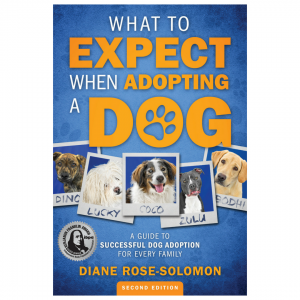
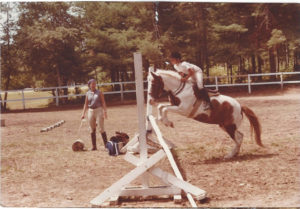 To learn more, please check out
To learn more, please check out  I’ve been carrying around a secret for years. I was bitten by a dog. There. I said it. It’s hard to admit when you are a humane educator and someone who teaches kids how not to get bitten, that it happened to me. So, other than the scar on my butt cheek, and the story I’ve told friends, I haven’t discussed it publicly. (Note: Neither of the dogs pictured here are the dog that bit me.)
I’ve been carrying around a secret for years. I was bitten by a dog. There. I said it. It’s hard to admit when you are a humane educator and someone who teaches kids how not to get bitten, that it happened to me. So, other than the scar on my butt cheek, and the story I’ve told friends, I haven’t discussed it publicly. (Note: Neither of the dogs pictured here are the dog that bit me.) He had bitten through my pants and it was pretty gory so I went to urgent care where they cleaned me up. I called animal control to let them know that there was a dog loose and I had been bitten.
He had bitten through my pants and it was pretty gory so I went to urgent care where they cleaned me up. I called animal control to let them know that there was a dog loose and I had been bitten. 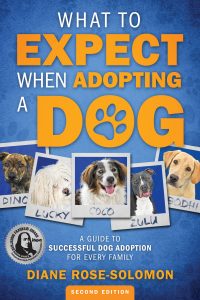

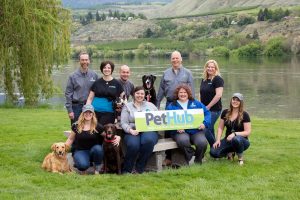 products which could potentially save your pet’s life, but Lorien shares wonderful stories and lessons that we can all learn from.
products which could potentially save your pet’s life, but Lorien shares wonderful stories and lessons that we can all learn from.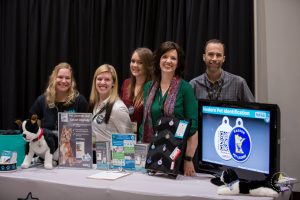 Now for pets, we get them home quickly. Over the last seven years that we’ve actually had our tags out there in the market, every year we come back with our statistics we find that 96% of PetHub covered pets are home within 24 hours or less. That’s huge. And of those pets that are getting home through the PetHub system, less than two percent are ever hitting a shelter door. And depending on where you live in this country, let’s face it, that could be a lifesaver. Certain breeds, if they end up in a shelter, that’s not good. We’re very proud of those statistics, they’ve held and they keep improving. So that’s what we do for pets, we get them reunited with their families quickly. Also we’ve got some pretty stylish tags, and they’re durable and reliable and all these other things too. That’s basically it, in a nutshell.
Now for pets, we get them home quickly. Over the last seven years that we’ve actually had our tags out there in the market, every year we come back with our statistics we find that 96% of PetHub covered pets are home within 24 hours or less. That’s huge. And of those pets that are getting home through the PetHub system, less than two percent are ever hitting a shelter door. And depending on where you live in this country, let’s face it, that could be a lifesaver. Certain breeds, if they end up in a shelter, that’s not good. We’re very proud of those statistics, they’ve held and they keep improving. So that’s what we do for pets, we get them reunited with their families quickly. Also we’ve got some pretty stylish tags, and they’re durable and reliable and all these other things too. That’s basically it, in a nutshell.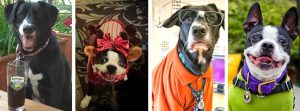
 DRS: I love that. One of the groups that I’m connected with in LA is called Shelter Transport And Rescue Team and they pull dogs out of LA shelters and they put them on this giant bus called ‘The Beast’ that they’ve outfitted for animal transport to the Pacific Northwest because there are way fewer dogs up there than there are down here.
DRS: I love that. One of the groups that I’m connected with in LA is called Shelter Transport And Rescue Team and they pull dogs out of LA shelters and they put them on this giant bus called ‘The Beast’ that they’ve outfitted for animal transport to the Pacific Northwest because there are way fewer dogs up there than there are down here.